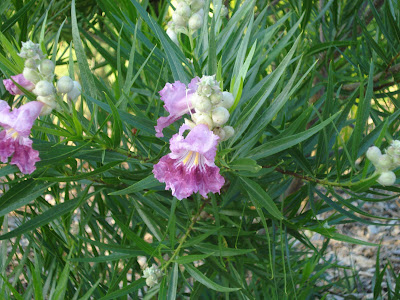EricaceaesD
Sunday, June 22, 2008
Sunday, June 15, 2008
Sunday Nature Photos
Here are some nature photos. The first I like to call "staring down the barrel of a banana plant". Banana plant leaves have a very interesting way of developing; they spiral outward and upward away from the meristem before relaxing and spreading out to receive the sun's rays. Very cool.
 Here is one for Chad. This is as good as I could get as far as photo clarity. I will say that these little red and black bugs appeared every day in the yard at 11 a.m. or so last week marching towards our house in groups of a hundred or so.
Here is one for Chad. This is as good as I could get as far as photo clarity. I will say that these little red and black bugs appeared every day in the yard at 11 a.m. or so last week marching towards our house in groups of a hundred or so.
Sunday, June 01, 2008
Sunday Nature Photos
I've decided to write a book. I've always wanted too, and people have often told me that I have a certain knack for nature writing. I also have a great editor/partner/wife who functions well in preventing me from waxing too scientific. I've actually started a chapter outline, but won't go into details beyond saying that my motivation is to help facilitate a paradigm shift with respect to how we the general public view our natural world.
Here are this weeks nature photos. I've been thinking a lot about vines lately. We have at least five species (probably more) that are easily found most anywhere in North Texas. Here is Virginia Creeper (Parthenocissus quinquefolia (L.) Planch.). This 'rainbow' specimen is growing out of a hole Marge dug to get back into our yard. I love the way the leaves change color as they mature. It seems that new creeper leaves produce carotenoid pigment early in development before chlorophyll giving the red color. I do not know for sure why, but it could be to prevent herbivory before leaves are sufficiently mature to withstand insect predators. Anyway, I like this photo.

 Here is a plant not native to North Texas, the Desert Willow (Chilopsis linearis (Cav.) Sweet ). This tree is native to the Trans-Pecos and Big Bend country. I wasn't able to get a photo last summer when I was there, but my botanist neighbor up the street has a number planted in her yard. If one is surprised by the amazing zygomorphic flowers and lack of catkins on this 'willow' don't be. It isn't a Salix at all, rather it is in Bignoniaceae. It is misnamed because of the lance-shaped leaves similar to true willows.
Here is a plant not native to North Texas, the Desert Willow (Chilopsis linearis (Cav.) Sweet ). This tree is native to the Trans-Pecos and Big Bend country. I wasn't able to get a photo last summer when I was there, but my botanist neighbor up the street has a number planted in her yard. If one is surprised by the amazing zygomorphic flowers and lack of catkins on this 'willow' don't be. It isn't a Salix at all, rather it is in Bignoniaceae. It is misnamed because of the lance-shaped leaves similar to true willows. Apparently Vandelhooch needs something to do on his summer vacation while he isn't attempting to cast the perfect fly. Here are two unidentified invertebrates:
Apparently Vandelhooch needs something to do on his summer vacation while he isn't attempting to cast the perfect fly. Here are two unidentified invertebrates:


